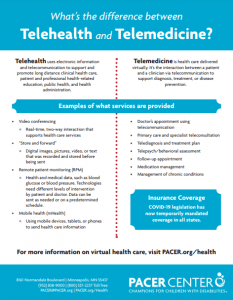Including Cystic Fibrosis, Down Syndrome, and Fragile X
General Information on Genetics
Chromosomes
Every human has 23 pairs of chromosomes. Chromosomes are little units that each contain a long piece of genetic instructions called DNA, which consists of many different genes.
Gene
The gene, which is a long string of DNA makes up a chromosome. From the 23 pairs of chromosomes that make up who you are, half of each pair comes from your mother and the other half comes from your father.
The genes you inherit from both your parents determine what kind of character traits you will have, how you will look, and what diseases you may have.
DNA
A DNA strand is made up of 4 bases which are T (thymine), A (adenine), C (cytosine), G (guanine). The specific order of these bases works like instructions, and decides what kind of protein this gene will make.
DNA writes instructions to make specific proteins. Proteins are made up of amino acids and are inside every cell. Proteins are vital for all living things. Different proteins have different functions in our body.
Genetic Disorders
When there is a change in a DNA sequence, it is called a mutation. If a DNA mutation occurs in the egg or sperm, it can be inherited by the child. Other mutations do not pass on from parents to children.
Genetic testing can provide information about changes in chromosomes, genes, or proteins that might impact a person’s health, development, or ability to respond to certain medical treatments. Testing is available from pre-birth throughout the lifespan.
A genetic test can confirm or rule out a suspected genetic condition or determine whether someone might develop a medical condition or pass on a genetic disorder to a child. More than 1,000 genetic tests are currently in use, and more are being developed.
Testing is voluntary and personal. Families can discuss with providers whether information found through testing might help with choice-making or whether the testing might cause stress. A geneticist or genetic counselor can provide guidance about the pros and cons of the test and discuss the social and emotional aspects of testing.
Preimplantation testing
Preimplantation testing is a when you screen a fertilized embryo before implantation. In-vitro fertilization is when a mother’s egg, and a father’s sperm are fertilized outside of the body, then implanted into the woman’s womb. When a mother chooses to go through in-vitro fertilization, the embryo gets tested for chromosomal or genetic disorders. Only the embryo without any genetic mutations or disorders gets implanted for pregnancy.
Prenatal testing
Prenatal testing is offered during pregnancy when there is an increased risk of the baby being born with a genetic disorder. Prenatal testing carries a small risk of losing the pregnancy through miscarriage due to the invasive nature of this test requiring amniotic fluid or tissue from the fetus area. Although prenatal testing won’t identify all possible genetic disorders, it can offer some answers and piece of mind.
Newborn screening
The most common type of genetic testing is newborn screening. Typically, 1 to 2 days after a baby is born, a blood sample will be taken by pricking a baby’s heel, and be used to identify and genetic disorders that can be treated early in life. The parents only receive results if they are positive, followed by additional tests to detect any genetic disorders.
Diagnostic testing
When a person is sent in to get diagnostic testing, there is usually a specific genetic condition.
If a patient is trying to find out what is making them ill, a medical provider may diagnose a specific condition, then have it confirmed with diagnostic testing.
Predictive and presymptomatic testing
Predictive and presymptomatic testing usually occurs when a family member may have been diagnosed with a genetic disorder. Predictive testing helps identify what mutations one may have that may increase their risk of developing specific disorders such as cancer, or heart disease. By finding a gene that increases someone’s chances of developing a disease, it can help patients make medical decisions about their health or lifestyle.
Carrier testing
When people have a family history of genetic disorders or belong to an ethnic group that has an increased risk of a disorder, they may go through carrier testing. When two people carry a change in a gene they can pass it to their children. If both parents get tested, they can be informed about their risk of having children with that genetic condition.
Pharmacogenomic testing
Medical providers may sometimes have to prescribe pharmacogenomic testing to identify which medication is right for an individual.
Research genetic testing
Research genetic testing is done for research purposes. It helps researchers expand the knowledge of genetics and the human body.
How Genetic Testing Works
Once a person comes to the decision with their medical provider, or genetic counselor that a specific genetic test is right for them, their medial provider will issue the test. A small blood sample, or other tissue such as the inside of your cheek with your DNA will be sent to a lab. The lab technicians will run the specific tests, then send the results to the patient’s doctor or genetic counselor. The medical provider will then interpret the results to the patient. If the patient requests, the lab results can be sent directly to them.
Challenges and Barriers
Aside from prenatal testing having small risks, there aren’t direct physical risks to getting genetic testing done. The drawbacks of genetic testing mainly consist of financial and emotional burdens.
Genetic testing can cost anywhere from $100 to $2,000 depending on the type of test. A more complex diagnoses will render more tests to be run, resulting in a higher bill. Getting results of the test may take from a few weeks to several months. Some test results may be available faster due to time sensitivity pertaining to that test, such as prenatal tests. Consulting with a genetic counselor or medical provider can give the individual information about turnaround time of a test.
When a genetic test is recommended by a medical provider, it may be covered by health insurance. Newborn screening can be fully or partially covered by many states as well. Coverage will depend on the type of test they are looking to get. Some people choose not to use their health insurance for genetic testing because the results can affect the person’s healthcare coverage. If you would like to know more about the Genetic Information Nondiscrimination Act (GINA) that protects individuals from genetic discrimination, visit NHGRI
Emotional drawbacks of genetic testing can be as burdensome or more so than financial drawbacks. Finding out the results of the genetic tests, can cause anxiety, anger, guilt, or depression. One may hope for a positive outcome and end up with more information than they can handle. It is important to discuss the potential outcomes with your genetic counselor before going forward with the test.
Benefits
Although there are limitations to genetic testing, getting a positive result doesn’t necessarily mean one will develop a disease. The Benefits of genetic testing is that it can help eliminate uncertainty and give you answers.
There are limitations to the treatment options for specific diagnosis and weighing the risks and benefits is important before making a decision to go through with genetic testing. After carefully discussing the risks and benefits of genetic testing, and choosing to go through with it, some people can find it helpful to have answers and the possibility for recommendations for treatments, and changes to lifestyle and habits. The opportunity to prepare for something gives some people peace of mind.
Genetic Condition Websites
American College of Medical Genetics and Genomes: Find a Genetic Clinic
Western States Regional Genetics Network
Cystic Fibrosis (CF)
As the Mayo Clinic states:
Cystic fibrosis (CF) is an inherited disorder that causes severe damage to the lungs, digestive system and other organs in the body.
Cystic fibrosis affects the cells that produce mucus, sweat and digestive juices. These secreted fluids are normally thin and slippery. But in people with CF, a defective gene causes the secretions to become sticky and thick. Instead of acting as lubricants, the secretions plug up tubes, ducts and passageways, especially in the lungs and pancreas.
Downloadable Resources
Adult Guide to Cystic Fibrosis
An Introduction to Cystic Fibrosis For Patients and Their Families (Spanish Version Available here)
Clinical Care Schedule for Newborns to 5-Year-Olds with CF
Cystic Fibrosis Guide for Parents
Cystic Fibrosis Parent Handbook
Articles
Newborn Screening for CF
Types of CFTR Mutations
What it’s Like to Live with Cystic Fibrosis
Websites
American Lung Association
Cystic Fibrosis Foundation
Cystic Fibrosis News Today
Cystic Fibrosis Trust
Genetics Home Reference: Cystic fibrosis
NORD: Cystic Fibrosis
Down Syndrome
As defined by the CDC:
Down syndrome is a condition in which a person has an extra chromosome. Chromosomes are small “packages” of genes in the body. They determine how a baby’s body forms during pregnancy and how the baby’s body functions as it grows in the womb and after birth. Typically, a baby is born with 46 chromosomes. Babies with Down syndrome have an extra copy of one of these chromosomes, chromosome 21. A medical term for having an extra copy of a chromosome is ‘trisomy.’ Down syndrome is also referred to as Trisomy 21. This extra copy changes how the baby’s body and brain develop, which can cause both mental and physical challenges for the baby.
Downloadable Resources
A Promising Future Together: A Guide for New and Expectant Parents (Spanish Version Here)
About Down Syndrome (Spanish Version Here)
Aging and Down Syndrome (Spanish Version Here)
Genetics Home Reference: Down Syndrome
Articles
A Mother Shares her Personal Journey of Welcoming a Baby with Down Syndrome
Mark’s Story—Written by his sister, Sonja
Megan’s Story
Websites
CDC: Facts about Down Syndrome
Global Down Syndrome Foundation
National Down Syndrome Congress
National Down Syndrome Society
Washington State Resources
Clallam Mosaic
Down Syndrome Association of Snohomish County
Down Syndrome Community of Puget Sound
The Arc of King County
The Arc of Washington State
Washington State DoH: Resources for Down Syndrome
Washington State Fathers Network
Fragile X
Harvard Medical School states:
Fragile X syndrome is an inherited disorder associated with mental retardation and a particular appearance. It is caused by an error in a small piece of the DNA (genetic blueprint) for the FMR1 gene. This gene is found on the X chromosome, one of the two chromosomes (X and Y) that determine gender.
In people with fragile X, a particular section of the DNA code — CGG — is “fragile” and gets repeated an unusually large number of times, compared with the normal 5 to 50 times. As a result, the FMR1 gene is not expressed (turned on), and the body cannot produce FMR1 protein, which is related to nerve function.
Downloadable Resources
Behavioral Challenges in Fragile X Syndrome
Early Childhood Developmental and Educational Guidelines for Children with Fragile X Syndrome
Facts About Fragile X Syndrome
Fragile X-associated Disorders: A Handbook for Families, Health Care Providers, Counselors, and Educators
Genetic Counseling & Family Support
Myth Busters For Patients and Families: Fragile X Syndrome
Articles
Are There Treatments for Fragile X Syndrome?
Carrier Testing for Fragile X Syndrome
Fragile X and Autism
Websites
CDC: Fragile X Syndrome (FXS)
FRAXA Research Foundation
Genetics Home Reference: Fragile X Syndrome
National Fragile X Foundation


